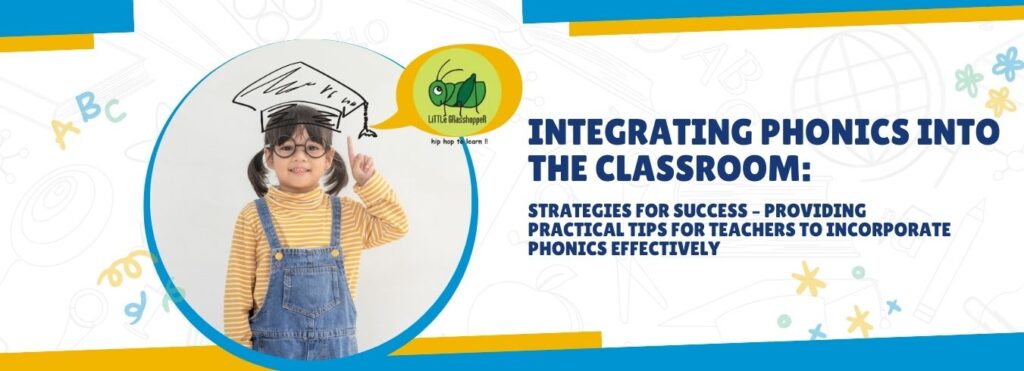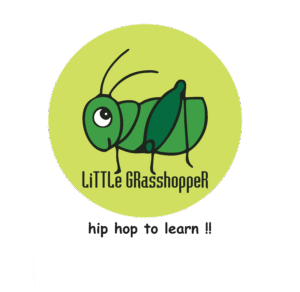Little Grasshopper Phonics Academy
Integrating Phonics into the Classroom: Strategies for Success – Providing Practical Tips for Teachers to Incorporate Phonics Effectively
By Little Grasshopper
- integrating phonics
- integrating phonics
- phonics in the classroom
- phonics in the classroom
- phonics strategies for teachers
- phonics strategies for teachers
- phonics online course
- phonics online course
- Little Grasshopper phonics training
- Little Grasshopper phonics training
- phonics certification course
- phonics certification course
integrating phonics
At Little Grasshopper, we believe that phonics is not just a subject — it’s a stepping stone to lifelong literacy. For every child to unlock the world of reading, we must begin by teaching teachers to teach phonics with clarity, creativity, and confidence.
Over the years, our commitment to high-quality phonics classes online and our robust phonics certification course has helped hundreds of educators transform their classrooms. But how exactly do we help teachers move from theory to practice? How do we support them in integrating phonics seamlessly into their teaching day — whether they’re in a classroom, a living room, or on a screen?
This blog will take you inside our proven strategies for phonics integration, offering practical tips to help teachers embed phonics into everyday learning in meaningful and engaging ways.
Before we dive into the “how,” let’s revisit the “why.”
When phonics is taught in isolation — as a subject detached from reading, writing, or play — it risks becoming mechanical. But when it’s woven into the fabric of classroom life, phonics becomes powerful. It becomes the foundation of fluency, the secret behind comprehension, and the rhythm behind confident reading.
Integrating phonics across subjects helps students see connections, build consistency, and develop skills naturally. And with the rise of phonics teaching online, the challenge now is to translate this integrative approach to both physical and virtual classrooms.
At Little Grasshopper, we don’t just offer a phonics online course — we guide teachers through the art of integration, helping them turn phonics into an experience rather than a task.
One of the most effective ways to integrate phonics is to make it routine — not just a lesson block. This means:
- Starting each day with a sound-of-the-day activity.
- Creating a daily “decode this!” challenge on the board.
- Using phonics English classes to link sounds with morning greetings, calendar time, or transition cues.
This helps reinforce phonemic awareness consistently, without students even realizing they’re practicing.
For teachers using phonics classes at home, a similar rhythm can be established. Our trainers advise parents and home-educators to begin sessions with a fun warm-up song, followed by decoding games or sound hunts around the house. These small, consistent moments add up to major literacy leaps.

Phonics doesn’t have to be separate from storybooks. In fact, it shouldn’t be.
Encourage teachers to pause during story time to highlight words with focus sounds. Ask students to spot known graphemes, segment tricky words, or blend sounds out loud. These interactive reading moments turn passive listening into active decoding.
At Little Grasshopper, our phonics and reading classes are designed with this blend in mind. We believe that storytelling and phonics are two sides of the same coin — one teaches structure, the other teaches love for language.
And whether teachers are in a classroom or enrolled in our online training for teachers, we show them exactly how to merge the two for maximum impact.
Children learn best when their bodies and senses are involved. That’s why we encourage educators to use:
- Songs and jingles for letter-sound correspondences
- Movement-based games (like hop to the right sound!)
- Tactile tools like sand tracing, playdough letters, or magnetic tiles
These approaches help phonics stick — especially for young learners or those who struggle with traditional methods.
For those teaching phonics English classes virtually, we provide digital alternatives: gesture-based songs, interactive slides, virtual manipulatives, and printable packs that can be used even in a phonics teaching online setup.
In our teacher training course online, every module is packed with these practical tools. We ensure that teachers don’t just learn what to teach — they learn how to make it memorable.
Strategy 4: Build Cross-Curricular Connections
Phonics doesn’t stop at English. Once students grasp the basics of decoding, they can apply it across subjects:
- In science: decode vocabulary like “habitat” or “photosynthesis”
- In math: read word problems with tricky terms like “subtract” or “numerator”
- In social studies: break down longer words like “community” or “independence”
When teachers link phonics learning to wider content, students begin to see the utility of decoding — and are more likely to retain it.
Through our phonics certification course, educators learn how to plan lessons that weave phonics into broader themes and inquiry-based projects. And for those in phonics classes online, we offer templates, guides, and training videos that make integration across subjects effortless.
Strategy 5: Differentiate by Student Needs
No two readers are the same — which is why no two phonics paths should be, either.
Some students may need extra repetition of sounds, while others are ready to decode longer words. In our phonics online course, we train teachers to assess individual skill levels and differentiate instruction accordingly.
This means:
- Creating small-group or one-on-one phonics sessions
- Using decodable readers at the right level for each child
- Offering scaffolding tools like sound mats or audio guides
In a phonics teaching online environment, we empower educators to use breakout rooms, digital worksheets, and audio prompts to offer the same level of personalization.
With this approach, every child moves forward — no one is left behind.
Strategy 6: Use Visual Anchors and Word Walls
Visual reminders are a powerful tool in helping children internalize phonics concepts. We encourage teachers to:
- Create sound walls or anchor charts for grapheme-phoneme correspondences
- Build word walls that group words by digraphs, blends, or vowel patterns
- Use icons and colours to visually differentiate sounds and rules
For phonics classes at home, we provide printable versions of these tools, so parents can turn kitchen walls into learning spaces. Visual aids ensure continuity between home and school, which is a core value in our programs.
Strategy 7: Make Assessments Informal and Ongoing
Rather than relying on end-of-term tests, teachers should embed informal phonics checks into everyday activities:
- Observe children during decoding or spelling games
- Use quick oral blending quizzes
- Let children self-check using picture cards or apps
We teach this reflective approach in our teacher training course online, where educators learn to assess progress in a low-pressure, ongoing way. This ensures students remain motivated and confident.
Supporting Teachers on Their Integration Journey
At Little Grasshopper, we don’t just provide information — we provide transformation. Every educator in our phonics online course is mentored, supported, and equipped with hands-on tools to apply what they learn.
Whether you’re a school leader planning to adopt phonics across classrooms or a parent-educator exploring phonics classes at home, we have a program tailored for you.
Here’s what you’ll gain from our online training for teachers:
- Access to tried-and-tested lesson templates
- Real classroom videos that demonstrate integration techniques
- Opportunities to connect with peer educators and share strategies
- Certification that reflects practical, applicable skills
In short, we empower teachers to make phonics part of how they teach — not just what they teach.
We’ve seen firsthand how effective integration changes outcomes. One kindergarten teacher told us:
“Before the course, I was teaching letters and sounds like isolated facts. Now, phonics is woven into everything we do — songs, stories, math, even art! My students are reading sooner, and I feel like a real reading teacher.”
Another participant in our phonics certification course shared:
“The course showed me how to teach phonics online with energy and fun. Even on a screen, my students are excited to learn sounds and build words. That’s a game-changer.”
These success stories fuel our mission — to keep teaching teachers to teach with heart and purpose.
Phonics integration isn’t a one-time event — it’s a mindset, a habit, and a cultural shift in how we teach literacy.
At Little Grasshopper, we’re proud to lead this shift through:
- High-impact phonics and reading classes
- A comprehensive teacher training course online
- Expert-led phonics English classes tailored for diverse learners
- Accessible, flexible phonics classes online that meet teachers where they are
Every teacher we train becomes a literacy leader. And every child they teach becomes a confident, capable reader.
Phonics works best when it’s everywhere — not just during “phonics time.” And that kind of classroom transformation starts with empowered, well-prepared educators.
If you’re looking to:
- Teach phonics English classes with deeper understanding,
- Launch phonics classes at home or in hybrid setups,
- Earn a valuable phonics certification course credential, or
- Enrol in effective, flexible online training for teachers…
Then you’re ready to join the Little Grasshopper community.
Together, let’s create classrooms where decoding is fun, reading is joyful, and every child sees themselves as a reader.
At Little Grasshopper, we’re not just offering training — we’re cultivating confidence.
We’re not just delivering phonics — we’re designing futures.
And we’re not just teaching teachers to teach — we’re empowering a generation of literacy champions!
- integrating phonics
- integrating phonics
- phonics in the classroom
- phonics in the classroom
- phonics strategies for teachers
- phonics strategies for teachers
- phonics online course
- phonics online course
- Little Grasshopper phonics training
- Little Grasshopper phonics training
- phonics certification course
- phonics certification course
